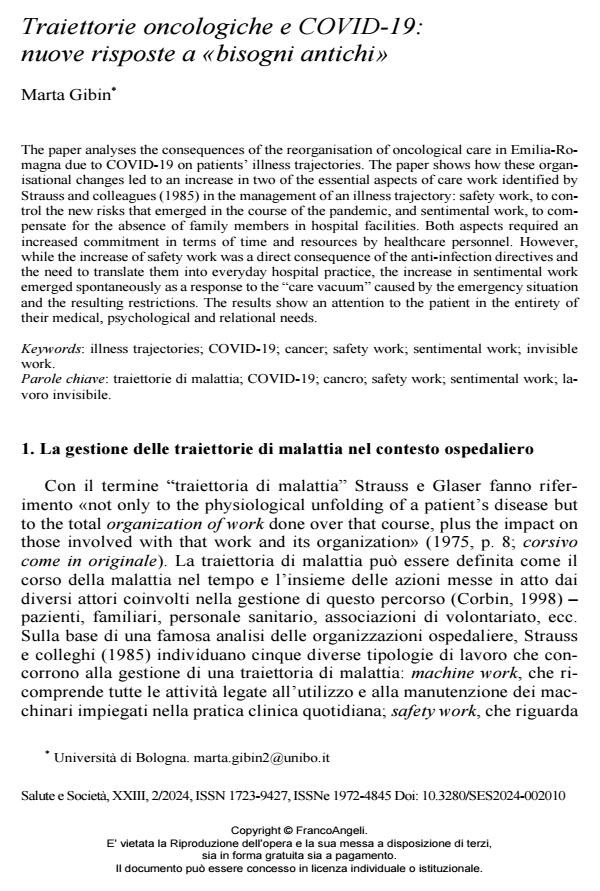Traiettorie oncologiche e COVID-19: nuove risposte a «bisogni antichi»
Journal title SALUTE E SOCIETÀ
Author/s Marta Gibin
Publishing Year 2024 Issue 2024/2
Language Italian Pages 15 P. 149-163 File size 200 KB
DOI 10.3280/SES2024-002010
DOI is like a bar code for intellectual property: to have more infomation
click here
Below, you can see the article first page
If you want to buy this article in PDF format, you can do it, following the instructions to buy download credits

FrancoAngeli is member of Publishers International Linking Association, Inc (PILA), a not-for-profit association which run the CrossRef service enabling links to and from online scholarly content.
The paper analyses the consequences of the reorganisation of oncological care in Emilia-Romagna due to COVID-19 on patients’ illness trajectories. The paper shows how these or-ganisational changes led to an increase in two of the essential aspects of care work identified by Strauss and colleagues (1985) in the management of an illness trajectory: safety work, to control the new risks that emerged in the course of the pandemic, and sentimental work, to compensate for the absence of family members in hospital facilities. Both aspects required an increased commitment in terms of time and resources by healthcare personnel. However, while the increase of safety work was a direct consequence of the anti-infection directives and the need to translate them into everyday hospital practice, the increase in sentimental work emerged spontaneously as a response to the “care vacuum” caused by the emergency situation and the resulting restrictions. The results show an attention to the patient in the entirety of their medical, psychological and relational needs.
Keywords: illness trajectories; COVID-19; cancer; safety work; sentimental work; invisible work.
Marta Gibin, Traiettorie oncologiche e COVID-19: nuove risposte a «bisogni antichi» in "SALUTE E SOCIETÀ" 2/2024, pp 149-163, DOI: 10.3280/SES2024-002010